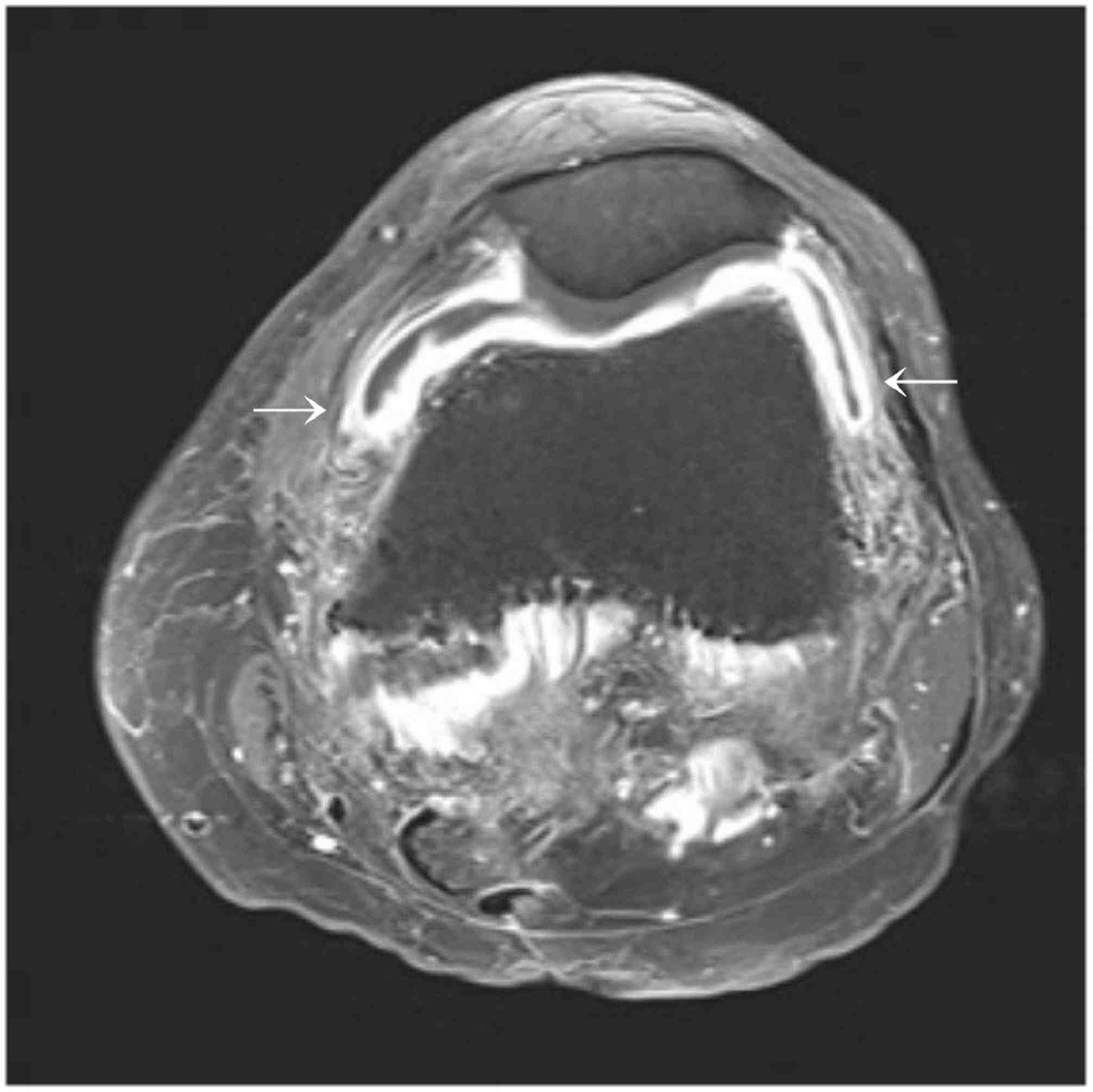Kosin Med J.
2016 Jun;31(1):79-85. 10.7180/kmj.2016.31.1.79.
Identification of streptococcus dysgalactiae subsp. equisimilis from septic knee by 16S rRNA gene sequencing
- Affiliations
-
- 1Department of Internal Medicine, Eulji General hospital, College of Medicine, Eulji University, Seoul, Korea.
- 2Department of Laboratory Medicine, Eulji General hospital, College of Medicine, Eulji University, Seoul, Korea. jdchae@eulji.ac.kr
- KMID: 2328721
- DOI: http://doi.org/10.7180/kmj.2016.31.1.79
Abstract
- Septic arthritis is the infection of a joint by an infectious agent, leading to arthritis. It is therefore important to identify and treat the correct bacteria in septic arthritis. However, accurate identification of bacteria by conventional methods is difficult because of the distinct biochemical characteristics of individual bacteria. This case report aims at assessing septic arthritis caused by Streptococcus dysgalactiae subsp. equisimilis(SDSE) using nucleotide sequences and discusses the associated treatment. Here, Streptococcus agalactiae was determined to be the causative bacteria for septic arthritis in a 77 year-old woman using the conventional method of hemolysis pattern interpretation and morphology. However, nucleotide sequence analysis of 16S ribosomal RNA revealed that SDSE was the causative strain. 16S rRNA gene sequencing can correctly identify bacteria strains that are difficult to be identified by traditional method, and this correct identification can provide patients with the opportunity for adequate treatment using the proper antibiotics.
Keyword
MeSH Terms
Figure
Reference
-
References
1. Margaretten ME, Kohlwes J, Moore D, Bent S. Does this adult patient have septic arthritis? JAMA. 2007; 297:1478–88.2. Gupta MN, Sturrock RD, Field M. A prospective 2-year study of 75 patients with adult-onset septic arthritis. Rheumatology (Oxford). 2001; 40:24–30.
Article3. Moser C, Andresen K, Kjerulf A, Salamon S, Kemp M, Christensen JJ. Infective Arthritis: Bacterial 23S rRNA Gene Sequencing as a Supplementary Diagnostic Method. Open Microbiol J. 2008; 2:85–8.
Article4. Adderson EE, Boudreaux JW, Cummings JR, Pounds S, Wilson DA, Procop GW, et al. Identification of clinical coryneform bacterial isolates: comparison of biochemical methods and sequence analysis of 16S rRNA and rpoB genes. J Clin Microbiol. 2008; 46:921–7.5. Korean Society for Chemotherapy, Korean Society of Infectious Diseases, Korean Orthopaedic Association. Clinical guidelines for the antimicrobial treatment of bone and joint infections in Korea. Infect Chemother. 2014; 46:125–38.6. Mathews CJ, Weston VC, Jones A, Field M, Coakley G. Bacterial septic arthritis in adults. Lancet. 2010; 375:846–55.
Article7. Park MJ, Eun IS, Jung CY, Ko YC, Kim YJ, Kim CK, et al. Streptococcus dysgalactiae subspecies dysgalactiae infection after total knee arthro-plasty: a case report. Knee Surg Relat Res. 2012; 24:120–3.
Article
- Full Text Links
- Actions
-
Cited
- CITED
-
- Close
- Share
- Similar articles
-
- A Case of Streptococcus gallolyticus subsp. gallolyticus Bacteremia in Liver Cirrhosis
- A Case of Neonatal Meningitis Caused by Streptococcus dysgalactiae subspecies dysgalactiae and Herpes Simplex Virus
- Prevalence of Complement-Mediated Cell Lysis-like Gene (sicG) in Streptococcus dysgalactiae subsp. equisimilis Isolates From Japan (2014–2016)
- First Isolation of Streptococcus gallolyticus subsp. pasteurianus from a Korean Patient with Severe Septic Shock
- Detection of Streptococcus dysgalactiae subsp. equisimilis in equine nasopharyngeal swabs by PCR


